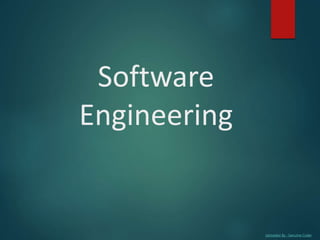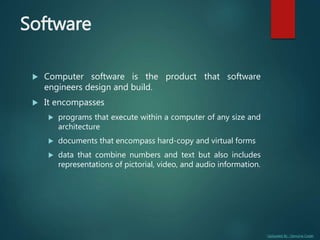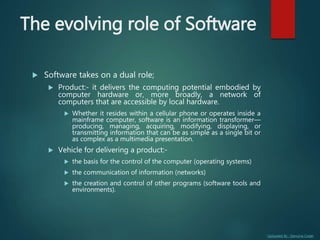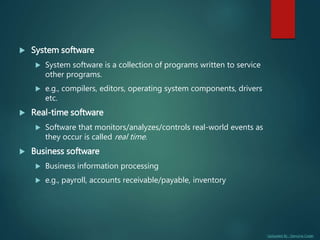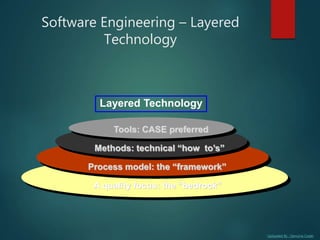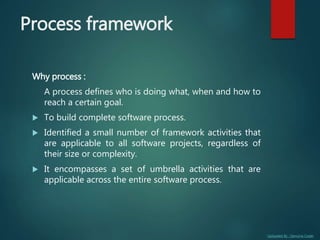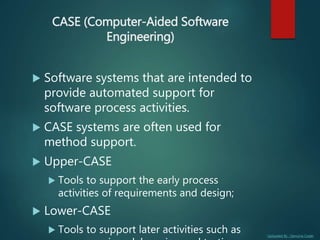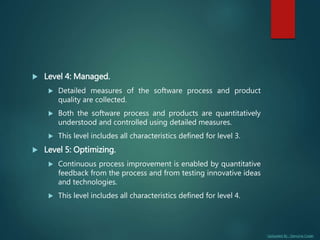The document covers the evolution and characteristics of software, emphasizing its dual role as a product and a delivery vehicle for computing capabilities. It highlights distinctions between types of software such as system, business, engineering, and embedded software, as well as the importance of software engineering methodologies, quality management, and process maturity models in the development lifecycle. Additionally, it discusses the transition from individual programmers to specialized teams and the challenges of maintaining legacy systems.
